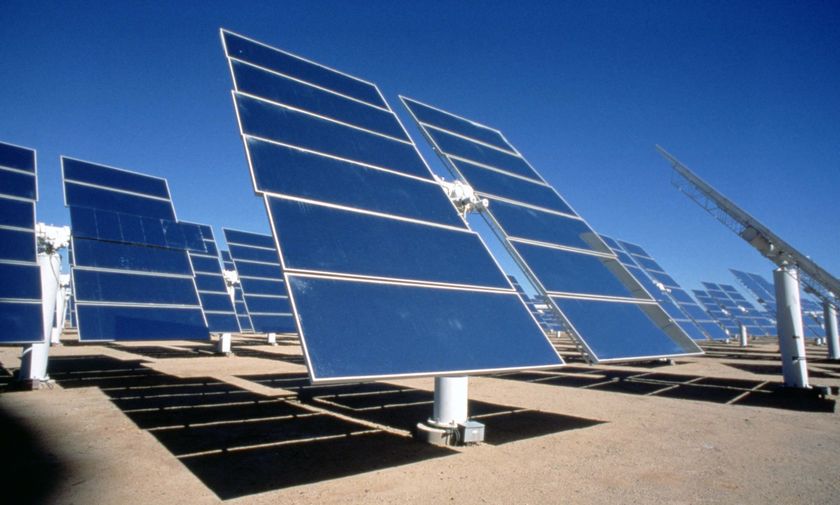Promising technological advances and a host of lucrative new contracts and incentives are encouraging signs to alternative energy watchers who say that the market for storing wind and solar-generated electricity could become a multibillion-dollar industry in the next decade.
Electric engineers have long argued that affordable and reliable energy storage is an essential component of an electric power grid that is supplied by an ever-growing share of renewable energy. That’s because the sun doesn’t always shine and the wind doesn’t always blow exactly when utilities need it to, NBC News reported Sunday.
But the cost of energy storage, until recently, remained too high to serve as a practical option. Instead, utilities largely relied on so-called “peaker plants” that they can ramp up within a few minutes to meet demand when, for example, air conditioners are cranked up on a steamy summer day.
Now, however, falling costs and industry friendly policy incentives are merging to make energy storage a “cost competitive” solution to balance the grid without having to build new generation, said Mike Hopkins, chief executive officer of California-based Ice Energy, a thermal energy storage company.
Millions to Billions
Today, the energy storage business is measured in the tens of millions of dollars, according to Matt Roberts, the executive director of the Energy Storage Association, a Washington-based trade group. While the pace of the sector’s growth hinges on policy, “it is definitely a multibillion-dollar industry once we get past 2020 or so,” Roberts said.
The storage market is currently driven by two groups of consumers: Ratepayers keen to shrink their electric utility bills, and utilities that are grappling with the need to absorb more renewable energy, make up for the retirement of older power plants, and defer costly infrastructure projects such as the construction of new transmission lines.
Niche markets such as customer-located batteries that store energy generated by solar photovoltaic panels on homes and businesses could be worth $1 billion by 2018, up from $42 million in 2014, according to Ravi Manghani, an energy storage analyst with GTM Research in Boston.
To date, most of the installed storage-plus-solar systems at homes and workplaces benefit the customer by decreasing their utility bills and increasing protection against power blackouts, he said. But going forward, utilities themselves “are going to be one of the bigger factors for the exponential growth that we expect,” he said.
Utility Control
Southern California Edison, for example, jolted the energy storage market at the end of 2014 with the announcement that it would procure more than 250 megawatts of energy storage to help fill a void in power generation due to the closure of the San Onofre nuclear reactors and the pending retirement of natural gas plants that rely on seawater for cooling.
“That is a more than five times higher storage procurement than they were required to do [by law and] points to the fact that they are seeing something that storage can be used for,” Manghani said.
The biggest winner was AES Energy Storage, which won a contract to build a 100-megawatt battery that will be placed on the grid in the Western Los Angeles Basin. But distributed, behind-the-meter (that is, attached to a home or building) storage solutions also came out big winners.
Santa Barbara-based Ice Energy, for example, won a contract to install 25.6 megawatts worth of its icemaker-like contraptions next to rooftop air-conditioning units. The thermal energy storage technology freezes water at night when electricity is cheap. The next day, this ice is used in the place of the air conditioner’s energy-hungry compressor pumps to cool refrigerant.
For any given contract, the thermal storage company installs hundreds of its rooftop systems and networks them together via smart grid communications technology. This in turn allows utilities to use the icemakers as a substitute for traditional power generation by shifting energy demand for cooling to the middle of the night, when there is often excess electricity on the grid.
“We are eliminating the typical cause of the need for peaking power plants, which is peak power, which is by and large air conditioning,” said Hopkins.
Other behind-the-meter contracts were awarded to more traditional battery-based storage companies, including one for 50 megawatts of storage from Advanced Microgrid Solutions and 85 megawatts from Stem.
The traditional battery technologies give utilities even greater flexibility to help manage some of the uncertainty that comes with solar and wind technologies, said Manghani. If the wind stops blowing in the heat of the day, for example, utilities can turn on the batteries instead of firing up a power plant to meet demand.
Other storage-market drivers include incentive programs in California, New York and New Jersey that provide customers rebates for installing behind-the-meter systems.


